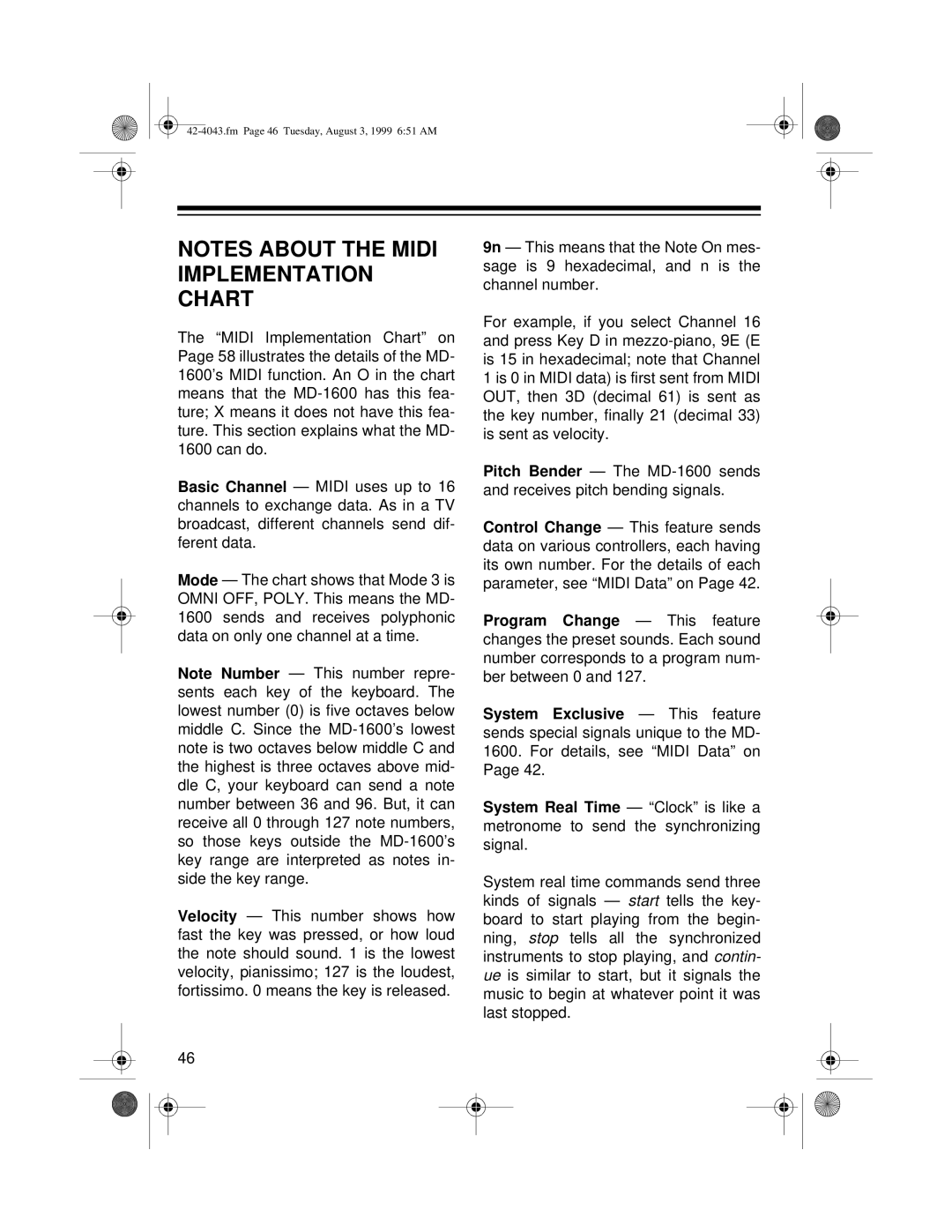
42-4043.fm Page 46 Tuesday, August 3, 1999 6:51 AM
NOTES ABOUT THE MIDI IMPLEMENTATION CHART
The “MIDI Implementation Chart” on Page 58 illustrates the details of the MD- 1600’s MIDI function. An O in the chart means that the
Basic Channel — MIDI uses up to 16 channels to exchange data. As in a TV broadcast, different channels send dif- ferent data.
Mode — The chart shows that Mode 3 is OMNI OFF, POLY. This means the MD- 1600 sends and receives polyphonic data on only one channel at a time.
Note Number — This number repre- sents each key of the keyboard. The lowest number (0) is five octaves below middle C. Since the
Velocity — This number shows how fast the key was pressed, or how loud the note should sound. 1 is the lowest velocity, pianissimo; 127 is the loudest, fortissimo. 0 means the key is released.
46
9n — This means that the Note On mes- sage is 9 hexadecimal, and n is the channel number.
For example, if you select Channel 16 and press Key D in
Pitch Bender — The
Control Change — This feature sends data on various controllers, each having its own number. For the details of each parameter, see “MIDI Data” on Page 42.
Program Change — This feature changes the preset sounds. Each sound number corresponds to a program num- ber between 0 and 127.
System Exclusive — This feature sends special signals unique to the MD- 1600. For details, see “MIDI Data” on Page 42.
System Real Time — “Clock” is like a metronome to send the synchronizing signal.
System real time commands send three kinds of signals — start tells the key- board to start playing from the begin- ning, stop tells all the synchronized instruments to stop playing, and contin- ue is similar to start, but it signals the music to begin at whatever point it was last stopped.
